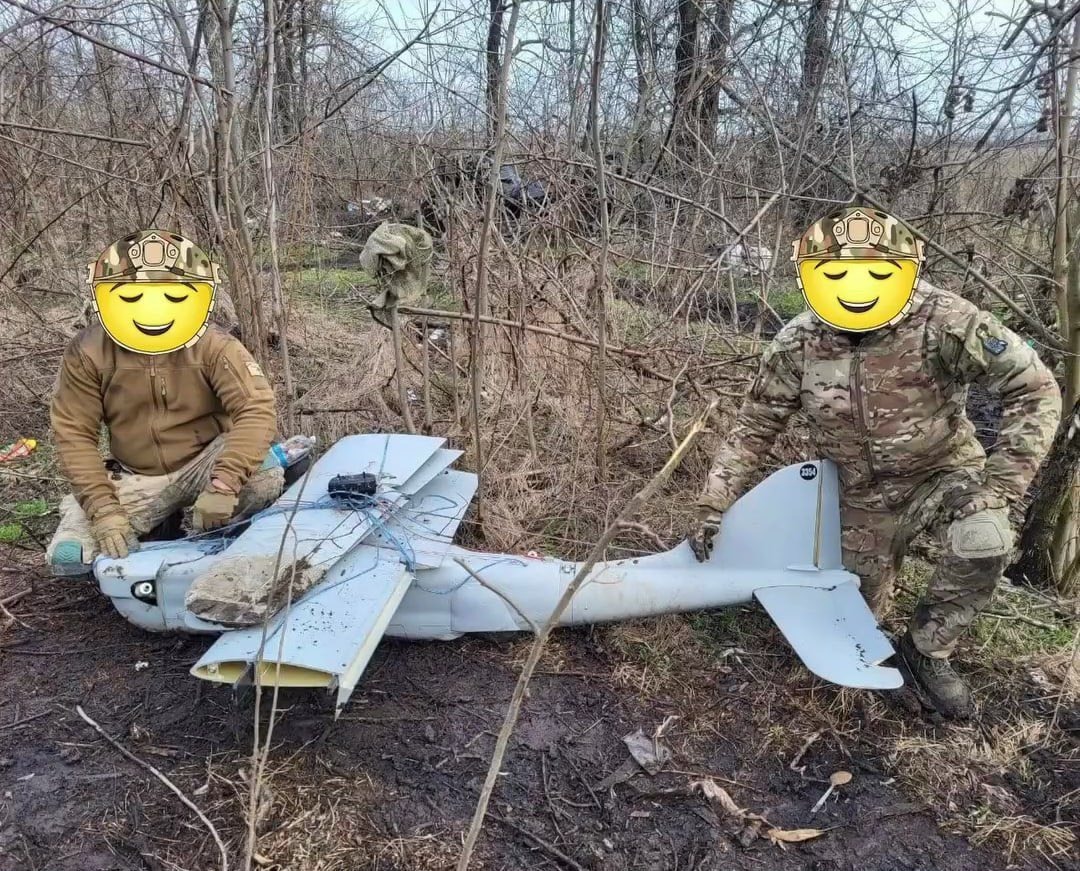In a video published on social media on February 6, an undamaged Russian Orlan-30 Unmanned Aerial Vehicle (UAV) was captured by the Ukrainian military.
The drone reportedly came crashing as Ukraine was using some unspecified electronic warfare system that interfered with the Russian reconnaissance Orlan-30 UAV.
While the Ukrainian military did not give specific details about how the drone was brought down and using which weapon or counter-drone system, the Ukrainian armed forces are known to be using jammers and other portable EW systems on the frontline for the purpose.
According to reports, the drone crashed in the “grey zone,” which falls in the middle of Ukrainian and Russian positions. Interestingly, Ukrainian military personnel used a robotic platform to remove the drone from its landing spot remotely. The drone capture was caught on camera, and the video was subsequently published on social media.
In the initial few shots, the unnamed Ukrainian robot is seen dragging the fallen Orlan-30 in a backward motion, hinting that it was headed toward the Ukrainian formations. Then, the frame changes, and two Ukrainian troops are seen inspecting the drones, which appear almost entirely intact.
These recovery robots are ground-based drones that the Ukrainian military has been increasingly incorporating into its missions, using them for various purposes, including engineering tasks, logistics, and even fire support. They have added the capability of capturing and evacuating enemy reconnaissance drones, further enhancing their operational utility.
The brief video was attributed to Ukraine’s national police, even though it is not in any recently released force videos. Newsweek sent an email requesting comments to the Russian Ministry of Defense and the Ukrainian authorities.
With significant investments in unmanned technology, Ukraine has produced several high-profile unmanned aerial vehicles (UAVs) that target Russian assets in the Black Sea or cross the border into Russian territory.
A Russian Orlan-30 that crashed not far from Ukrainian positions is retreived by a Ukrainian ground drone. It will give useful information. pic.twitter.com/Str67Vm4eW
— NOELREPORTS 🇪🇺 🇺🇦 (@NOELreports) February 6, 2024
These UGVs have a similar range of capabilities to airborne drones, and they may also keep Ukrainian forces farther away from hazardous and susceptible situations. The “Army of Robots” that Ukraine planned to establish last year will operate on the ground alongside the nation’s “Army of Drones” in the air.
Mykhailo Fedorov, the minister of digital transformation and drone tsar for Ukraine, announced in mid-September 2023 that Kyiv was testing its “Ironclad” unmanned robot in front-line military missions. According to a statement from Fedorov, the unmanned ground drone has a machine gun and can support firefighting besides performing reconnaissance.
Both Russia and Ukraine are developing unmanned ground vehicles (UGVs) that are meant to replace human soldiers in the most dangerous and casualty-intensive storming raids. However, this may be the first of the few visible instances of these ground drones being used to retract downed hostile aerial vehicles.
The undamaged drone captured as a trophy by the Ukrainian military would come as a setback to the Russian army, which has intensified drone operations and attacks along the frontlines in recent times.
What Do We Know About The Orlan-30?
The Orlan-30 drone is a successor to the Orlan-10 and is reportedly used for surveillance and to improve artillery shot accuracy. In addition, compared to the Orlan-10, it features a laser target designator that aids in target illumination and enhances the precision of artillery strikes.
The Orlan line of unmanned aerial vehicles (UAVs) has shown to be an essential component of Russian military operations in Ukraine. From medium heights, these drones pinpoint Ukrainian vehicles and troops in preparation for swift artillery, missile, and loitering munition attacks.

The Orlan line of drones is reportedly used by Russian troops in Ukraine to effectively suppress and destroy opposing air defense (SEAD/DEAD) activities and artillery spotting, in addition to spotting hostile equipment.
Russian artillery can respond in as little as three minutes after identifying a target when a drone hovers over an enemy position, giving them little time to flee the kill zone.
The Orlan-30 is also designed for airborne surveillance, as well as for locating, spotting, and recognizing objects that are either visible or infrared.
Additionally, it provides target identification for precision-guided weapons to destroy stationary and moving targets during the day or at night when combined with a mission payload. The Orlan-30 drone can fly for five hours straight, reach a maximal speed of 170 kilometers/hour, and soar as high as 5,000 meters.
The primary distinction between the drone and the Orlan-10 is its laser target designator-rangefinder. Russia’s keenly-watched defense show, the Army-2023 Forum, saw the debut of an export version of the Russian unmanned aerial vehicle (UAV), Orlan-30, equipped with a laser target identification system for precise weapons.
Drones with laser lighting are specifically used to guide artillery weapons, such as the Krasnopol missile.
In April 2022, the Ukrainian forces, for the first time, captured a Russian Oraln-30 drone on the battlefield. In August 2022, Ukrainian armed forces reportedly shot down a modern Russian “Orlan-30” surveillance drone. Multiple instances of the drone being shot down have since been reported.
- Contact the author at sakshi.tiwari9555 (at) gmail.com
- Follow EurAsian Times on Google News